Tea tree oil is one of the best researched essential oils. Several studies found its antibacterial, anti-fungal and antiseptic properties. Even multidrug-resistant bacteria was killed reliably. Today it is used to treat acne, athlete's foot, nail fungus, vaginal fungus, mold, aphthae, gingivitis, warts, herpes and many other conditions. The leaves of were originally used by Australian Aborigines as a treatment for open wounds and intestinal diseases. Around 1770, it was introduced to the West by Joseph Banks and Captain James Cook. But it was not until chemist Dr A.R. Penfold was able to proof, that tea tree oil was 13 times more effective than phenol, that it came to be used widely - which it still is today.
Tea tree oil is an effective remedy for mild to moderate acne. Even at a concentration of only 1%, it almost completely eradicates the bacterium that causes the condition (propionibacterium acnes); inflammation is soothed, the healing process can begin and the development of further inflammation is inhibited. Tea tree oil supports skin regeneration, since the monoterpenols contained in the oil stimulate your immune system to form new skin cells. To fully exploit the effect, we recommend mixing tea tree oil with jojoba oil or a similar carrier. Jojoba oil does not grease and, thanks to its similarity to our own sebum, is able to transport the tea tree oil deeper into your skin.
Prepare a vial of tea tree-jojoba oil mixture and apply it to your skin every morning and evening. A 1% tea tree oil preparation is sufficient to effectively combat acne and pimples. At this concentration, typically no side effects occur.
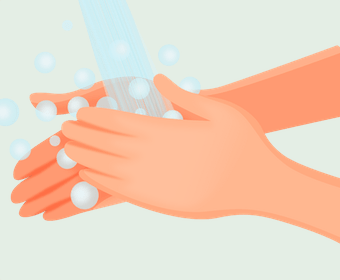 Wash your hands thoroughly.
Wash your hands thoroughly.
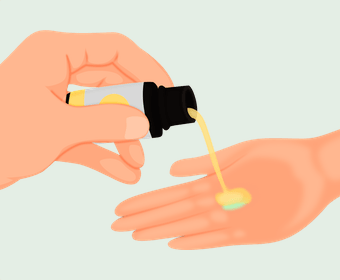 Put some jojoba oil on your hand.
Put some jojoba oil on your hand.
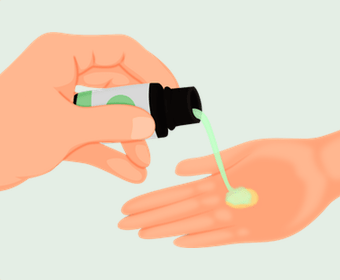 Add 1-2 drops of tea tree oil.
Add 1-2 drops of tea tree oil.
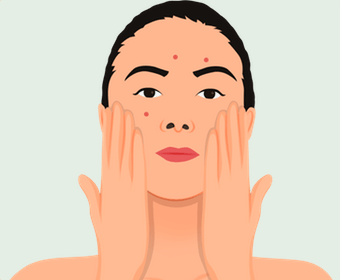 Spread mixture over your skin.
Spread mixture over your skin.
Tea tree oil has strong anti-fungal properties, meaning it kills skin fungi of all kinds - even those that are resistant to conventional anti-fungal agents, as is the case with some species of candida.
Fungal infections can occur anywhere on your skin, but most often affect the mouth, genital area and feet.
The same preparation that is used to treat acne is also effective against athlete’s foot. First wash your feet thoroughly, apply the mixture, and then put on clean socks.
Alternatively, you can use a foot bath. Here is how to do it:
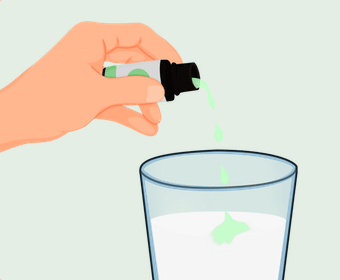 Mix 5 drops of tea tree oil with 200 ml of cream.
Mix 5 drops of tea tree oil with 200 ml of cream.
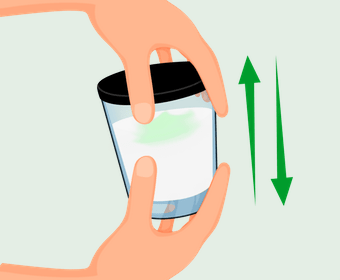 Shake mixture well.
Shake mixture well.
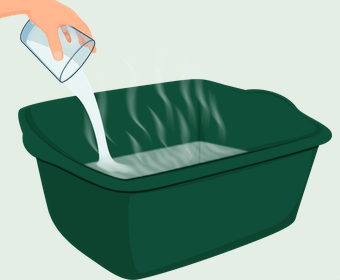 Add mixture to about 5 liters of hot water.
Add mixture to about 5 liters of hot water.
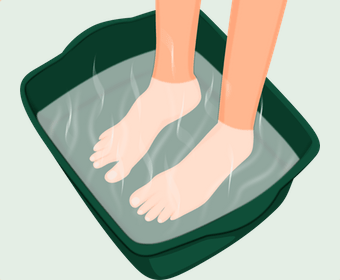 Soak feet for 5-10 minutes.
Soak feet for 5-10 minutes.
Aromatherapy uses tea tree oil fragrance for its effects on our mind and emotions. Tea tree oil is said to help against fatigue, listlessness, stress, weakness and anxiety. In addition, it stabilises emotions and promotes clarity of mind.
Using a diffuser is best, as, unlike is the case for aroma lamps, the oil does not get heated. The dosage depends on the size of your room; as a rule of thumb, about 3-5 drops are sufficient for a 15 m2 room.
Unfortunately, the scent of tea tree oil is perceived differently by different people - some love it, others cannot stand it. Before you use tea tree oil in your home, everyone present should first sample the bottle and make sure that they like the smell.
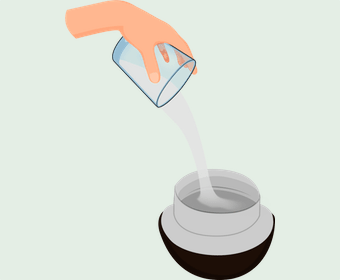 Fill your diffuser with 200 ml of water.
Fill your diffuser with 200 ml of water.
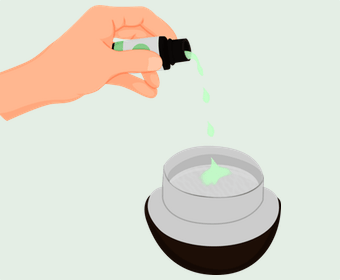 Add 3-5 drops (for 15 m2) of tea tree oil.
Add 3-5 drops (for 15 m2) of tea tree oil.
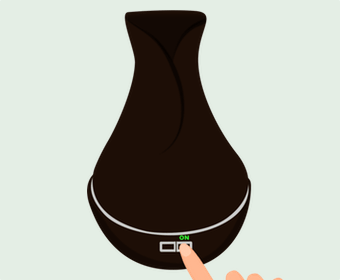 Close diffuser and turn it on.
Close diffuser and turn it on.
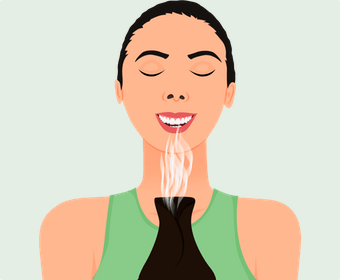 Close your eyes and enjoy the scent.
Close your eyes and enjoy the scent.
Halitosis and gingivitis are caused by bacterial or fungal growth in the oral cavity; this can be prevented by regular brushing, flossing, and by using an antibacterial mouthwash. Tea tree oil is extremely effective against fungi and bacteria, and it also promotes the healing of gingivitis, making it an excellent addition to your oral hygiene toolkit. Tea tree oil is definitely an acquired taste, but so long as you stay within the recommended dosage, it is quite harmless. The easiest way to use it is to mix the tea tree oil with your toothpaste before brushing.
Alternatively, add 2 drops of tea tree oil to 200 ml of water, swish this mixture around in your mouth for 30 seconds, then gargle. Make sure you spit it all out, and rinse with clean water. Tea tree oil should never be ingested!
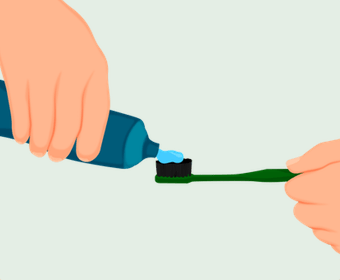 Put some toothpaste on your brush.
Put some toothpaste on your brush.
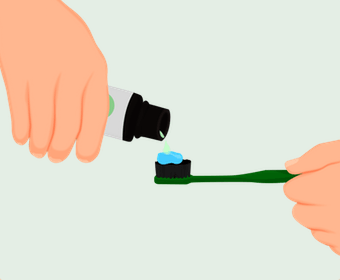 Add exactly 1 drop of tea tree oil.
Add exactly 1 drop of tea tree oil.
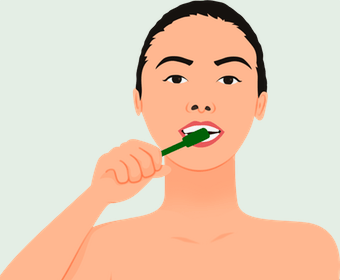 Brush your teeth thoroughly as usual.
Brush your teeth thoroughly as usual.
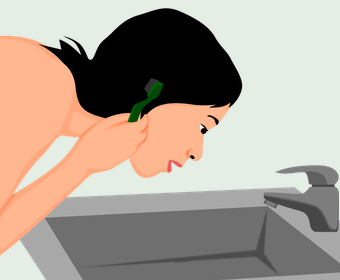 Spit everything out and rinse with water.
Spit everything out and rinse with water.
Unfortunately, tea tree oil does not provide full protection against insect bites, but, when applied to clothing or your hair, it is able to provide some respite, since many pests dislike the scent. Alternatively, you can mix it with jojoba oil or almond oil and apply it straight to your skin. Even a scent lamp on your table can help to reduce the number of insects in the area, but it won’t be sufficient to keep them all at bay.
A small amount of pure tea tree oil helps to soothe mosquito, bee and wasp stings. Just soak a cotton swab with tea tree oil and dab onto the sting site. Treating stings right away helps against inflammation, swelling, and itching.
Ticks and mosquitoes, too, dislike the scent of tea tree oil. Unfortunately, the scent tends to dissipate quickly, which is why it is unsuitable as a long-lasting protection against ticks while out in nature. If no better options are available, you can rub tea tree oil onto your neck, hair and legs. Against ticks, it is not enough to just rub it on your legs alone; although most ticks are being picked up from high grasses, etc., many also fall down from shrubs and trees.
If you keep pets in your household, fleas and lice can spread quickly. To get rid of these, you can add tea tree oil to your favourite shampoo. Against lice, for example, you can mix 10 drops of tea tree oil with 100 ml shampoo. Tea tree oil shampoo should be used once daily for at least 8 weeks.
Dogs can also be treated with the aforementioned tea tree oil shampoo. The easiest way is to put the shampoo on your hand and stroke your dog’s coat; then wash off the animal. Tea tree oil is not suitable for cats!
Tea tree oil also finds a range of possible applications in your household. For example, it can be used to freshen your laundry; just add a few drops of tea tree oil to the fabric softener chamber of your machine, or add 4-8 drops directly onto your laundry before drying.
It is even possible to add 2-4 drops to the water chamber of your steam iron. But do keep in mind that not everyone likes the strong scent of tea tree oil. Particularly if you have children, you should first make sure that they can tolerate the smell. Tea tree oil is not suitable for toddlers and infants under the age of 3.
As mentioned earlier, tea tree oil is a very effective anti-fungal agent, so you can use it against mould growths inside your house. You can simply spray the affected areas with pure tea tree oil, and then ventilate well. Do expect the scent to linger for a couple of days afterwards.
Since tea tree oil acts as a natural disinfectant, you can use it to clean or disinfect desktops, kitchen utensils, keyboards, cell phones, and other household items. To do this, just add a few drops to soap, or into your cleaning bucket.
The antibacterial effectiveness of tea tree oil against multidrug-resistant pathogens has been demonstrated both in the lab and directly in humans.
Tea tree oil has proven efficient in reducing MRSA-induced biofilm formation, which often occurs in chronic wounds. New studies aim to show whether, in addition to containing existing infections, there is also a preventive effect. The focus here is on the development of new test methods that deliver faster results and can detect the pathogen itself, not just the antibodies formed.
DThe antiseptic effect of tea tree oil can be partly traced back to the enhanced activation of white blood cells. Antibiotics used in combination showed no impairment when given at the same time as tea tree oil. However, further investigations are needed for routine use in everyday medical practice to combat multidrug-resistant pathogens.
Whether in the mouth and throat, on the hands and feet, or in the genital area - fungal infections (such as Malassezia furfur or Candida albicans) are common diseases among the population. In studies, tea tree oil has proven to be an (often even more effective) alternative to traditional medications.
Tea tree oil has an inhibitory effect on growth, which can be attributed to the alkenes and alcohols it contains. These influence the cell wall and membrane of the pathogen cell, leading ultimately to its death. The best effect was achieved through a combination of conventional means and tea tree oil. Even antibiotic-resistant pathogens had a significant susceptibility to tea tree oil in the laboratory.
The studies thus point to a high potential for tea tree oil in the treatment of bacterial or fungal-induced diseases. Of course, further investigations are necessary to reliably demonstrate the effect in the case of acute or recurrent inflammations.
Tea tree oil has been used in various studies as a supplemental remedy for cancer, where it even showed potential as an alternative treatment. Tea tree oil was able to severely impair the cancer cells in their survival and reproductive capabilities. However, it caused no damage to fibroblasts or mononuclear cells of peripheral blood. This means that the cell-killing effect occurred only in diseased cells, but not in healthy ones.
In cancer treatment on the skin, tea tree oil led to skin irritations. However, these were no worse than the reactions to conventional remedies and disappeared quickly and completely. A possible mechanism of action against breast or gastrointestinal cancer is seen in the enhanced release of oxygen radicals.
To assess the full spectrum of potential supplementary or complementary effects of tea tree oil in combating cancer, further studies are required.
According to a study by Dr. Ezra Bejar (2017), about 40% of all tea tree oil samples tested in Europe were found to be contaminated – either mixed with cheap eucalyptus oil, or other artificial additives. This leads, among other things, to unwanted side effects, allergic reactions and redness of the skin. Tea tree oils from potentially unsafe places of origin, such as China and some African countries, are to be treated with caution. For example, China exports far more tea tree oil than it can produce. Since customers are not in a position to detect impurities themselves, the ISO 4730: 2017 standard was created. It provides a guarantee that tea tree oil is 100% pure and of high quality. Only very few tea tree oils meet this high standard, and are certified as such. Ysamin Tea Tree Oil is tested at the Southern Cross Plant Science Analytical Research Laboratory in Lismore, Australia, immediately after manufacturing, and is fully ISO 4730: 2017 certified.
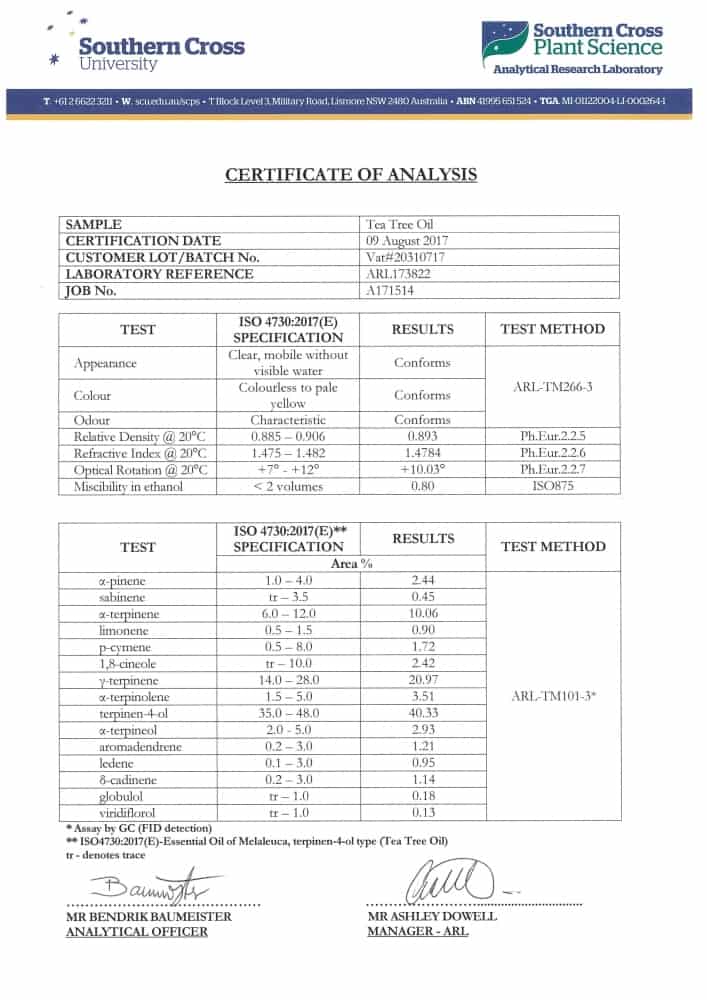
Tea tree oil has likely been used for over 1000 years by the indigenous Aborigines in Australia to treat a wide range of diseases and injuries.

Cpt James Cook sailed onwards to South Wales, where he observed large numbers of tea trees. He was told by the native Aborigines that an extract from the leaves has miraculous healing powers and can be used to treat abdominal pain as well as open wounds. Back in those days, open cuts were often a death sentence due to the high risk of infection. The Aborigines crushed the leaves into a pulp and applied it directly onto wounds. The antibacterial effect of the tea tree was so strong that even casualties with severely contaminated wounds made a full recovery.

According to reports, Cpt James Cook began to regularly drink tea made from these leaves; in all probability, this was the reason why he called the plant simply 'tea tree'. Subsequently though, the secret of the tea tree fell into oblivion, and it was not until 1925 that chemist A.R. Penfold rediscovered the healing effects of this plant.

He was able to show that tea tree oil was 13 times more effective than phenol (the antiseptic typically used at that time). During the Second World War, many Australian soldiers fell victim to “trench foot”; no conventional treatment methods seemed to work, until a doctor with Aboriginal heritage remembered the effects of the tea tree, and decided to apply pure tea tree oil to soldiers’ feet. This worked extremely well, and in many cases the fungal infection disappeared in a mere matter of days. As a result of this, a bottle of tea tree oil was made part of every soldier’s first aid pack.
At a dosage of 1%, no side effects generally occur. However, allergic reactions, redness or irritation of the skin may happen if tea tree oil is used improperly, or has been oxidised by age.
Pure tea tree oil can be harmful to health when in contact with mucous membranes, or if it is ingested. For your own safety, please always follow the instructions on the packaging. In addition, the following safety precautions should be taken at all times:
No eye contact: If eye contact occurs, rinse with cold water immediately. If symptoms did not lessen after 20 minutes, contact your ophthalmologist. Do not swallow: If more than a teaspoon has been ingested, seek medical assistance. Allergic reactions: Can occur up to 24 hours after exposure. If so, do not continue to use it! Pets: Tea tree oil is toxic for cats and aquatic animals. Children: Tea tree oil is not suitable for babys under 3 years. Keep out of reach of children. It may heighten the risk of gynecomastia. During pregnancy: Undiluted essential oils should not be used. Properly diluded, it is safe to use on the skin.